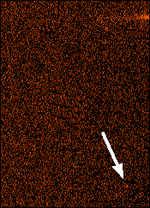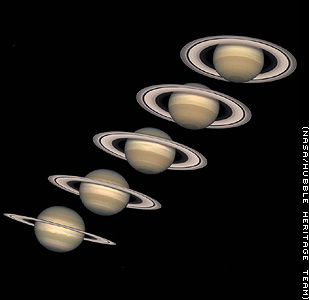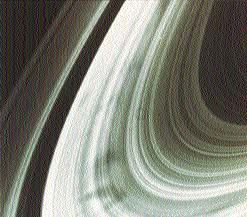|
Moons
- General appearance: They are
not aligned and are easier to spot when they cross the thin rings;
A complex set of satellites, with 62 known
moons (the most recent one announced in 2007; some don't have names
yet), many of which have interesting motions; Most are covered by ice
and
rotate
synchronously.
- Small moons: From Pan (20 km
in diameter) to Phoebe (220 km), a dozen or so; Interesting ones
are Hyperion's chaotic rotation, Janus and Epimetheus' orbit
swapping, the orbit sharing moons, ...
- Medium-sized moons: Six, with diameters
of several hundreds of km [Rhea, two-colored Iapetus,
Dione, Tethys, Enceladus with its water jet, Mimas].
- Titan: Seen by Huygens in 1655;
slightly bigger than Mercury, at 20 planet radii; We can't see
its surface, because of its thick atmosphere (with N, Ar, methane,
ammonia, and 470 mph winds!), but radar shows "seas of sand", maybe
ethane-dust particles; Very cold, but may have pre-life conditions,
and
has been
considered as a possible spaceship stopover (A C Clarke); The Huygens
probe landed on it in Jan '05.
|
 |
 Saturn
Saturn
 Saturn
Saturn
_232x174.jpg)


![]()